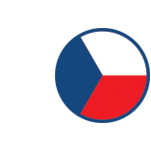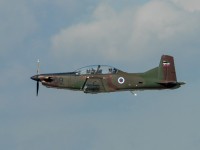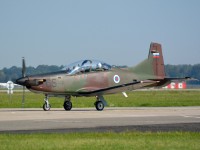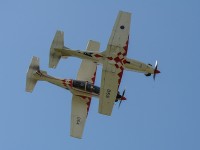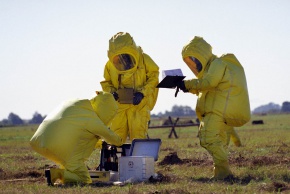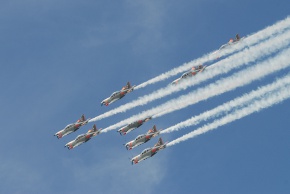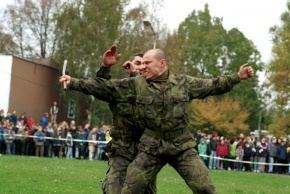PC-9
Training airplanes play one of the essential roles within each Air Force, in particular training new pilots. After the flight simulator, cadet pilot moves on planes that excel in manoeuvrability and reliability. The Swiss Pilatus PC-9 is one of those, not only it can be used for basic, but also advanced training.
PC-9 is a two-seat turboprop training aircraft, which was developed by the Swiss company Pilatus Aircraft during the 1980s, since 1997 it has been produced in an improved version of the PC-9M. The design is directly linked to its predecessor PC-7, but it is equipped with a more powerful engine Pratt&Whitney Canada PT6A-62 of 857 kW, which drives a four-blade aluminium propeller. The PC-9 is also equipped with a larger cockpit and has an improved air brake system or a new wing profile. Thanks to its reliability and low operating costs, the aircraft is popular not only among military users across the world but also civilian operators. The aircraft also served as the basis for the development of the Beechcraft T-6A Texan II, which is used by the US Air Force and Navy.
To this date, more than 250 PC-9 aircraft have been produced and are used by the Bulgarian, Slovenian and Croatian Air Force. Outside NATO, this aircraft is used, for example, in Ireland, Mexico, Switzerland or Thailand.
Specifications |
|
|---|---|
| Wingspan | 10.13 m |
| Length | 10.14 m |
| Height | 3.26 m |
| Empty weight | 1 725 kg |
| Max takeoff weight | 3 200 kg |
| Maximum speed | 593 km/h |
| Service ceiling | 11 580 m |
| Range | 1 537 km |
